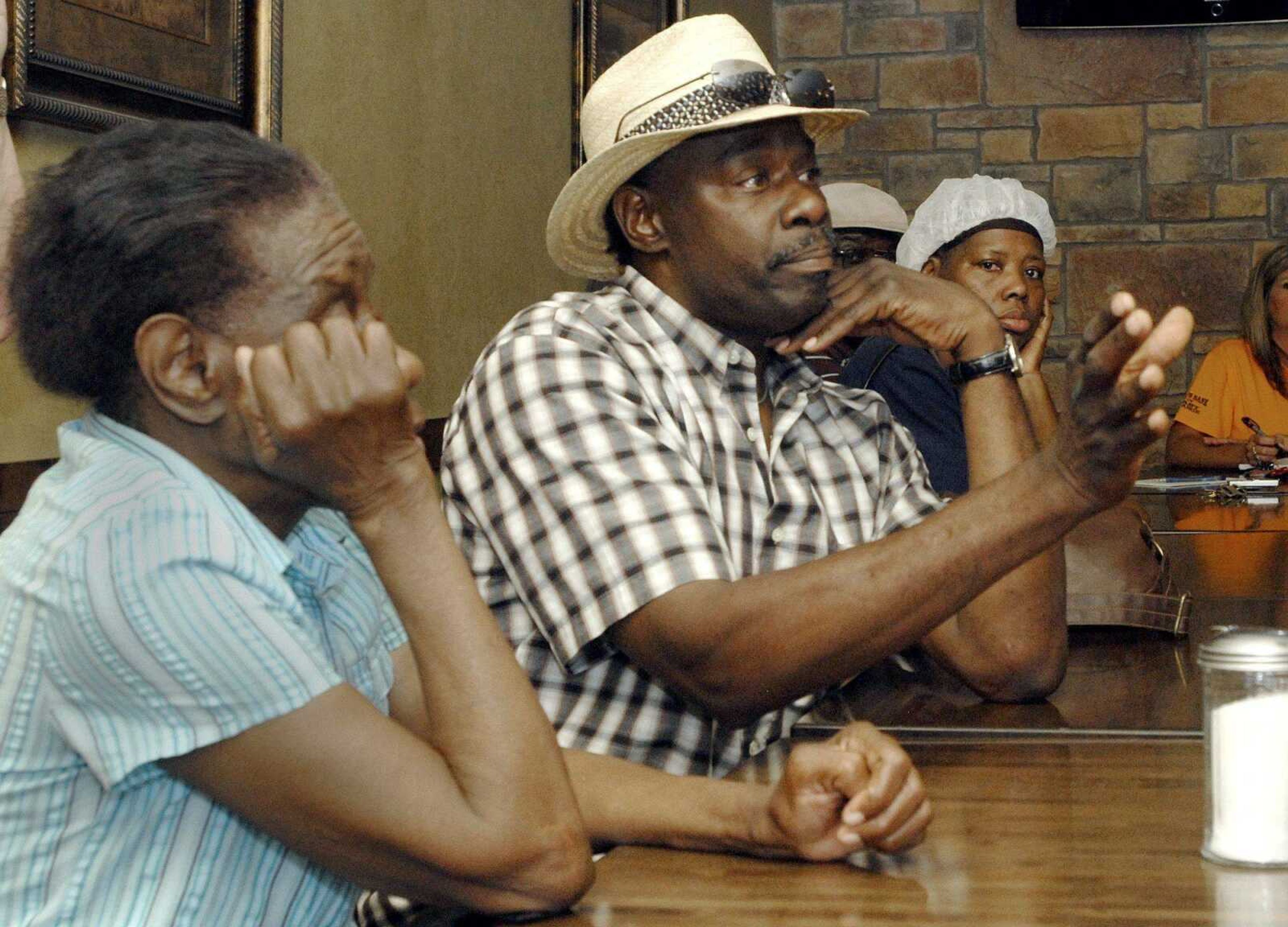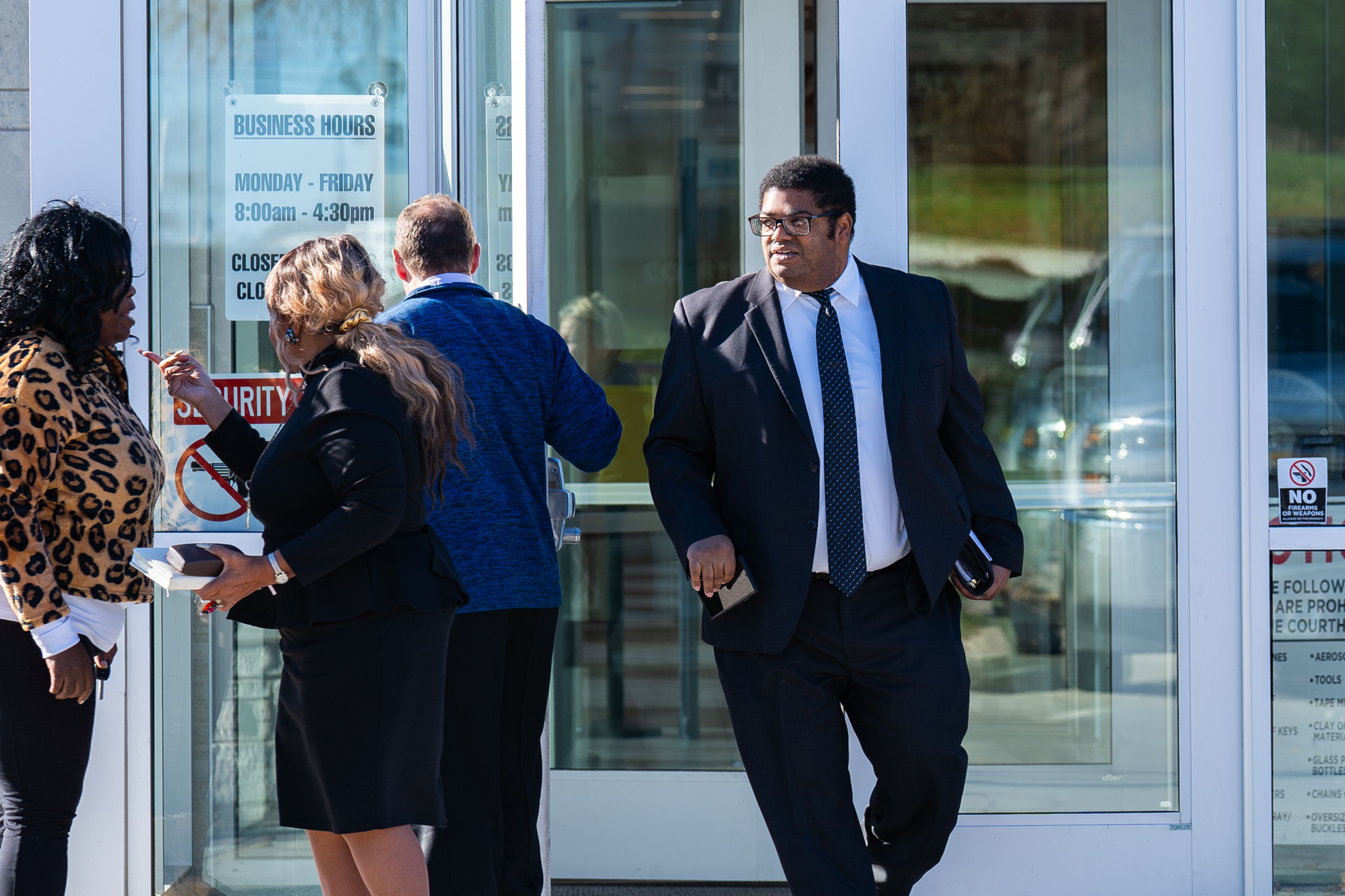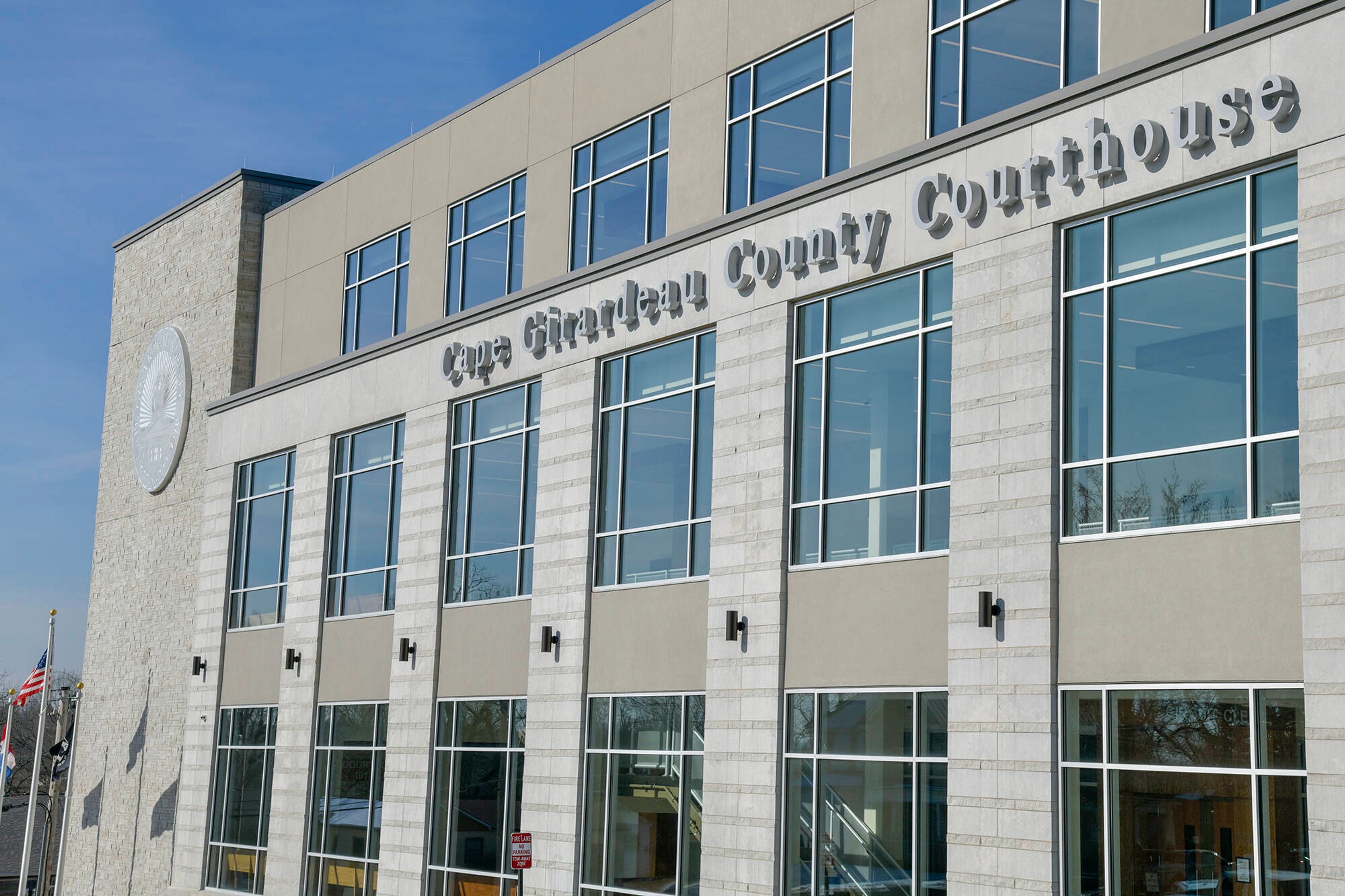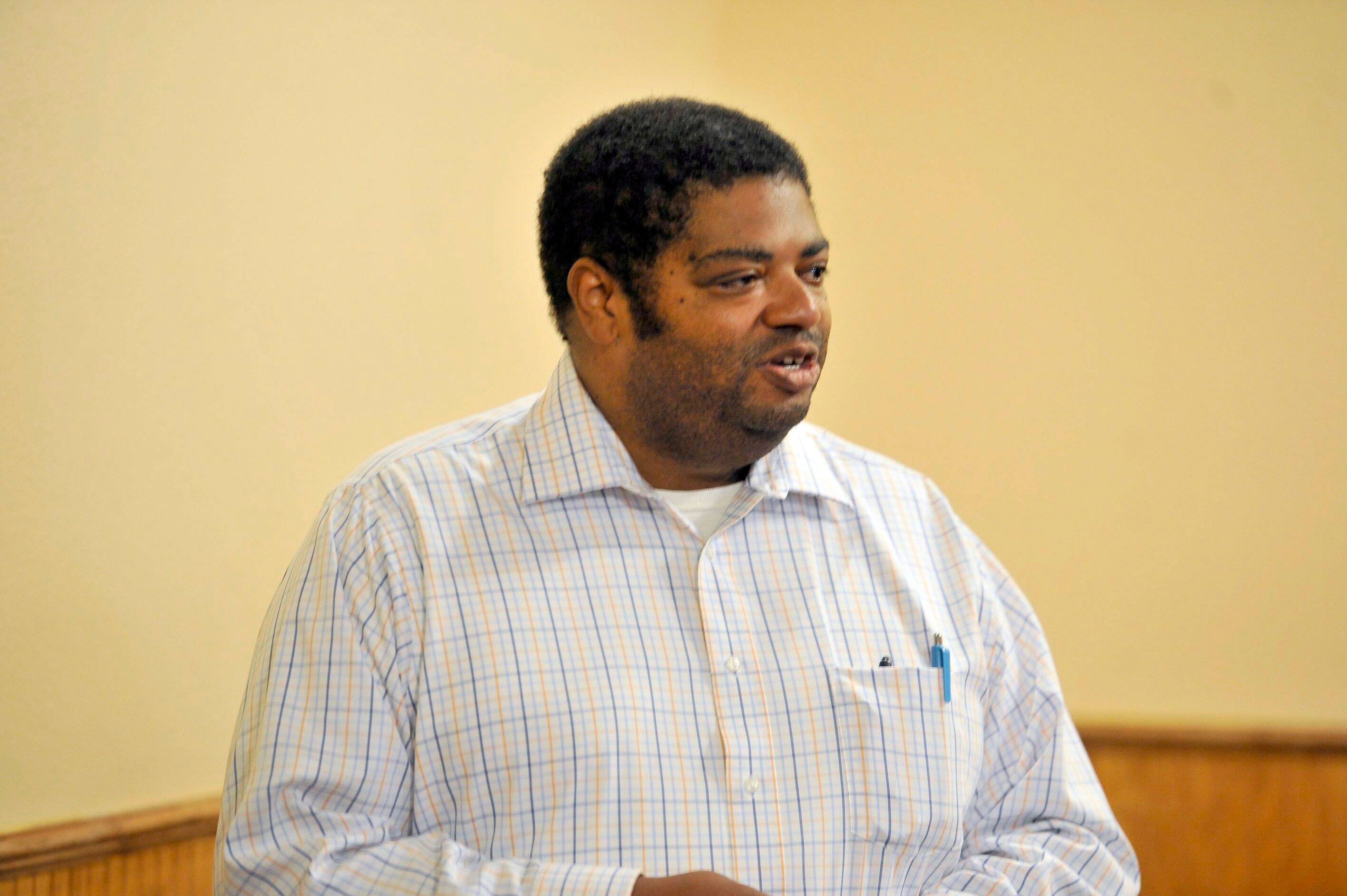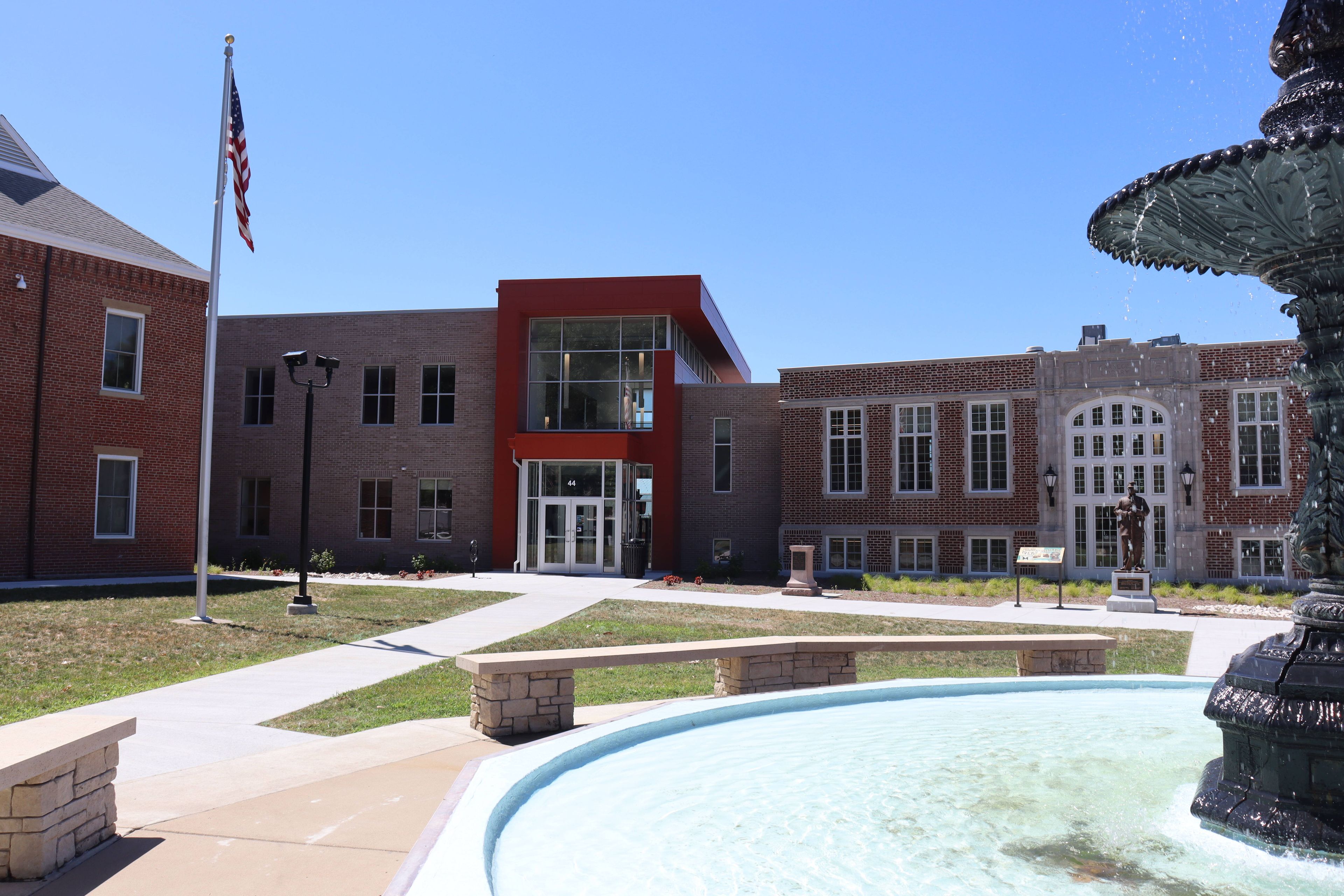Going home: Pinhook residents look to relocate as farmers look to plant
CHARLESTON, Mo. -- Along a rural highway in Mississippi County, Paul Haney quietly sits and smokes in a lawn chair as a lifetime of ruined possessions smolder into ashes in a burn pile out back. In the deserted village of Pinhook, Joe and Dora Brown peer into the home they shared for three decades where more than an inch of mud now carpets the floors and creeps up the walls...
CHARLESTON, Mo. -- Along a rural highway in Mississippi County, Paul Haney quietly sits and smokes in a lawn chair as a lifetime of ruined possessions smolder into ashes in a burn pile out back.
In the deserted village of Pinhook, Joe and Dora Brown peer into the home they shared for three decades where more than an inch of mud now carpets the floors and creeps up the walls.
A short distance away, farmer John Moreton dirties his hands in soil he's worked since he was 5 years old, hoping to salvage a harvest that will net -- at best -- many tens of thousands of dollars less than he got last year.
These are just some of the stories of those who live in the Birds Point-New Madrid Floodway. A month ago, their lives were upended when the U.S. Army Corps of Engineers unleashed torrents of Mississippi River water across 130,000 acres in Mississippi County.
Corps officials said at the time that the floodway needed to be activated, as it was intended, to help reduce floodwaters in communities in Missouri, Illinois and Kentucky.
Over the past several days, the waters have receded enough for residents to make their way back to their property to assess the damage.
Many did not like what they found.
The water had rushed through nearly 100 homes, shattering windows, pulling off doors and rendering much of what was left waterlogged and useless.
For the farmers, the waters wreaked havoc on topsoil, equipment, barns and farmhouses. In some places, long sections of county roads have been replaced with cavernous holes that make navigating the floodway a bumpy nightmare.
"I'm trying to be optimistic," said Moreton during a break from his planting. "But we feel like the corps hurt us here for no reason. A lot of people aren't going to come back. I don't hear any wives that are willing to move back in."
Haney, who is 72, was working Wednesday to gut his house. He and a friend were tearing out much of interior of the house that he built in 1973 for himself and Marylin, his wife of 46 years. After the order came to leave, Haney was unable to get many of his possessions out. While he and his wife stayed with his nephew, the water rose to a depth of more than 5 feet, destroying nearly everything.
Much of their clothing was tossed into a burn pile the sat at the edge of the 2,400 acres he farms. Last year, there was corn, soybean, wheat. This year, like many floodway farmers, he hopes to eke out as much of a crop as he can.
But Haney has tried to stay stoic.
"It don't set good with you," he said. "But at the same time, I'm not going to sit here and cry about it. There ain't a damn thing you can do about it."
Haney plans to rebuild. He's going to give the home six months to dry out and then get to work fixing it up. In the meantime, there's farming to do.
"We don't quit around here," he said.
Haney knows his family will make it. The ones he really worries about are his neighbors in nearby Pinhook.
So do the people of Pinhook. On Wednesday, the community of about 26 African-Americans, many senior citizens, worried about what comes next. Many Pinhook residents met Wednesday night with state, federal and local government representatives to voice their concerns.
They have decided, they said, that despite decades of fond memories, they want to leave Pinhook forever. Debra Tarver, the village's board chairwoman, told the officials that residents voted and they believe FEMA or the corps should pay to relocate them "as a unit" to another spot in Mississippi County.
"This is a family," Tarver said. "We love Pinhook and most of us have lived there all our lives. We want to stay together, but it needs to be somewhere else. Then, if something happens -- earthquakes, whatever -- then fine. But no more water."
The meeting was attended by officials from FEMA, Darren Lingle of U.S. Rep. Jo Ann Emerson's office, Mississippi County Presiding Commissioner Carlin Bennett and state Rep. Steve Hodges, D-East Prairie. The officials cautioned them that may be a possibility but that it could take years. In the meantime, they urged them to register with FEMA for individual assistance.
Whatever happens, most Pinhook residents spoke as if they were determined to move away. No one is living in their homes today, and one resident said they are homeless and something has to be done.
George Williams Sr., who worked for the East Prairie School District for years, said it makes no sense to move back to Pinhook, which he said could be flooded every time the corps feels like it's appropriate.
"I'm too old to go through this again," Williams said. "If we stay, we're sitting on a keg of dynamite that could go off at any second. Everybody else may want to do something different, but I bid it farewell."
As the residents continue to try to get questions answered about their uncertain future, corps officials said Wednesday they have maintained a presence in the floodway. Steve Barry, the corps' emergency manager for the Memphis District, said the corps is checking on the floodway on a regular basis.
Water is still getting into the floodway from where the first breach was made May 2 at Birds Point, he said. But it's only coming in about 1,000 cubic feet per second, which he called "just barely any water at all."
But the corps is still waiting for the river to drop to a low enough stage where the inflow stops completely, he said. The corps has officially said it would repair the levee with a temporary measure by March 1.
"But obviously, Mother Nature controls the timeline more than anybody else," Barry said in a telephone interview from his Memphis office.
Anywhere from 25 to 50 percent of the floodway is still underwater, Barry said.
Corps spokesman Jim Pogue said a systemwide assessment will begin within the next two weeks, starting in Cape Girardeau and continue all the way down to New Orleans. The corps will look at how its levees and other flood-fighting measures worked along the length of the Mississippi and then evaluate what needs to be done. Funding to pay for what could be billions in repairs to the system could also prove daunting, he said.
In the meantime, Pogue encouraged floodway residents to attend an informational meeting at 6 p.m. today in East Prairie, Mo., at the Church of God Family Life Center at 322 N. Washington St. The meeting will focus on the floodway claims filing process. Dave Sirmans, the corps' district counsel, will be on hand to answer questions.
Sirmans said Wednesday the gist of the meeting will be to tell residents the claims process, such as the time limits for different types of claims. A so-called takings claim is to real property and must be filed within six years. A tort claim, asserting negligence, must be filed within two years, he said.
After those claims are made, Sirmans said, his office will evaluate them, but a decision would be made on tort claims by the U.S. Army Claims Service and takings claims would be determined by the corps' headquarters office. But he warned that any floodway farmer involved in the class-action lawsuit need not apply since the matter is in litigation.
Meanwhile, residents of the floodway continue to fret about what they feel has been stolen from them, either by the river itself of by the corps decision to activate the floodway.
"We're going to miss our place," Dora Brown said Wednesday as she surveyed her Pinhook home. "When I first saw it, it just made you want to cry. We raised our children here. We love our community. We really don't know what we're going to do. We've never been in an experience like this before. None of us have."
smoyers@semissourian.com
388-3642
Pertinent address:
Mississippi County, MO
Connect with the Southeast Missourian Newsroom:
For corrections to this story or other insights for the editor, click here. To submit a letter to the editor, click here. To learn about the Southeast Missourian’s AI Policy, click here.

